What Caught My Eye – US Edition
Estimated reading time: 4 minutes
Hi, I thought we’d provide a straightforward look at what’s been going on in the United States over the past month as recorded by our notes in “Macro Tones” — our own recorded chronological compilation of pieces from professional partners, industry research notes, internal observations, and financial media which we feel relevant to economic reasoning and portfolio positioning.
The headline in the US isn’t fireworks but more so quiet shifts that can shape the next year: the Fed easing a touch, corporate risk‑taking thawing, and the AI build‑out moving from sizzle to heavy lifting.
Here’s what caught my eye recently…..
1) The Fed moved from restraint to patience
Source: ANZ “5 in 5”; Morgan Stanley post‑FOMC and Weekly Warm‑Up summaries; FOMC statement (late Oct–early Nov 2025)
In late October the US central bank trimmed rates modestly and signalled that from 1 December it will stop “QT” (Quantitative Tightening) — the process of letting bonds roll off its balance sheet. The decision wasn’t unanimous, which says the Fed is leaning easier, but still debating the pace. Chair Powell also pushed back on the idea that a December cut is a foregone conclusion. One practical watch‑item our notes flag: as QT ends, cash reserve balances and funding market conditions into year‑end bear watching — a technical piece of plumbing, but important for liquidity.
The currency angle is often overstated in the short term. The US dollar’s direction depends on more than the Fed: interest‑rate gaps, global growth, risk appetite and commodity trends all play a part. Over the past year the USD has generally weakened; any immediate swings around this policy shift can be noisy rather than the start of a new trend. The broader point is that policy is less restrictive than mid‑year, and that tends to make funding conditions (i.e. debt) for everyone a little easier over time.
2) Corporate America: earnings and deals are thawing, not surging
Source: Blackstone commentary on private equity/IPO pipeline; Morgan Stanley global strategy/earnings season notes (Oct–Nov 2025)
Earnings season has been better than feared in the broad middle of the market. Our notes highlight a sales “beat” rate more than double the long‑run average and median earnings growth around 11% for the Russell 3000 — the best in four years. That supports the idea that the earnings recession has faded for many companies, even if mega‑cap headlines dominate.
Alongside that, announced mergers and acquisitions are lifting and the IPO window is cracking open. After two stop‑start years, that matters for capital recycling: healthy companies can raise money, invest and reshape portfolios; private assets get clearer exit paths. The indicator to watch is follow‑through: do deals close, and on what terms? Narrowing credit spreads for solid borrowers and a steady pipeline of profitable IPOs would confirm the thaw.
A quick market‑tone note from our diary: we’ve also seen risk‑off days — tech leaders and AI‑linked names can be volatile when valuations are stretched and cash‑flow timing is questioned. That mix is consistent with a market that’s climbing a “wall of worry” rather than charging ahead unchecked.
3) AI: infrastructure now, profits later
Source: AFR profile of Rajiv Jain/GQG and Gerard Minack note; Frazis Capital monthly; Morgan Stanley Global Macro tech capex updates; PitchBook clean‑energy VC (late Oct–Nov 2025)
Big Tech keeps investing heavily in chips, data centres and power to run AI models. Our notes cite estimates that data‑centre spend by the largest players could approach US$600–700bn in 2026–27. That scale is reshaping supply chains for semiconductors and the electricity grid — the poles‑and‑wires infrastructure (transmission lines, substations, interconnectors, distribution and storage) that must be upgraded to power data centres. It’s also showing up in private markets where energy‑adjacent deals — from storage to next‑gen nuclear — are attracting capital.
Not everyone agrees on the payoff timeline. Some respected investors question whether revenues will catch up quickly; others emphasise steadier beneficiaries in utilities and networks. A useful frame is to separate the infrastructure layer (power, networks, hardware) from the applications layer (new software and services). The first looks more utility‑like — steady, asset‑heavy and regulated. The second is where winners can be spectacular, but the timetable is uncertain.
4) Sentiment snapshot: reluctant bulls, record cash
Source: Citi “Reluctant Bulls” summary; Barron’s on Berkshire Hathaway cash (early Nov 2025)
Our notes describe investors as reluctant bulls: wary of valuations and the concentration in AI leaders, yet still invested. It’s a market supported by improving fundamentals but tempered by caution — a classic “wall of worry”. In the background, Berkshire Hathaway is sitting on a record cash pile. That doesn’t tell us where markets go next, but it captures the tension between opportunity and restraint that still defines the US backdrop.
Final Thought
The US picture over the month is one of measured easing and cautious optimism. Policy is becoming less restrictive, earnings breadth is improving, corporate activity is normalising, and the AI story is migrating from headlines to hard assets. It’s still a noisy backdrop, but the direction of travel looks a touch friendlier than it did mid‑year.
As always, this note is general in nature and shouldn’t be construed as personal advice. Always seek financial or investment advice from a professional before acting on anything.
— Scott
